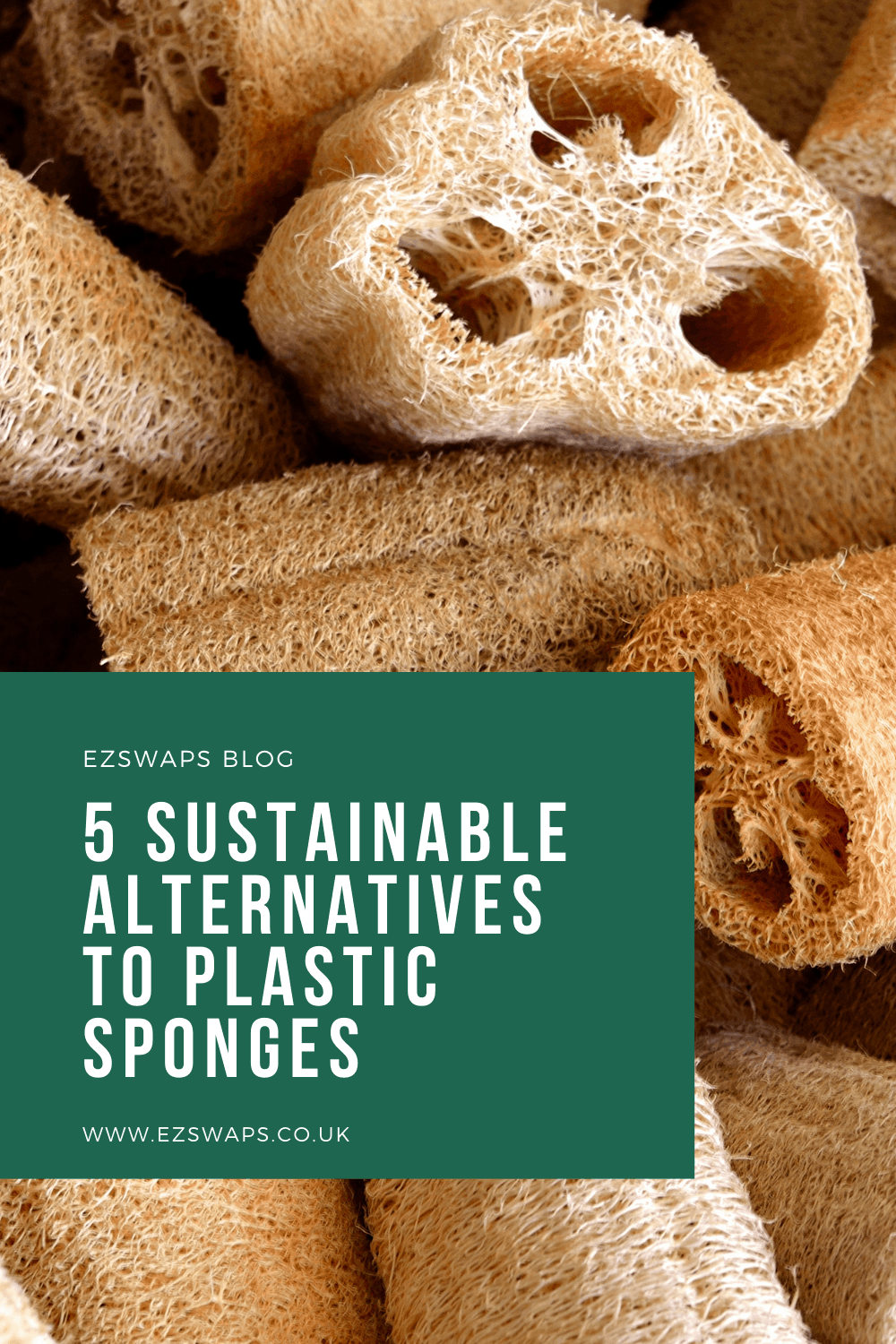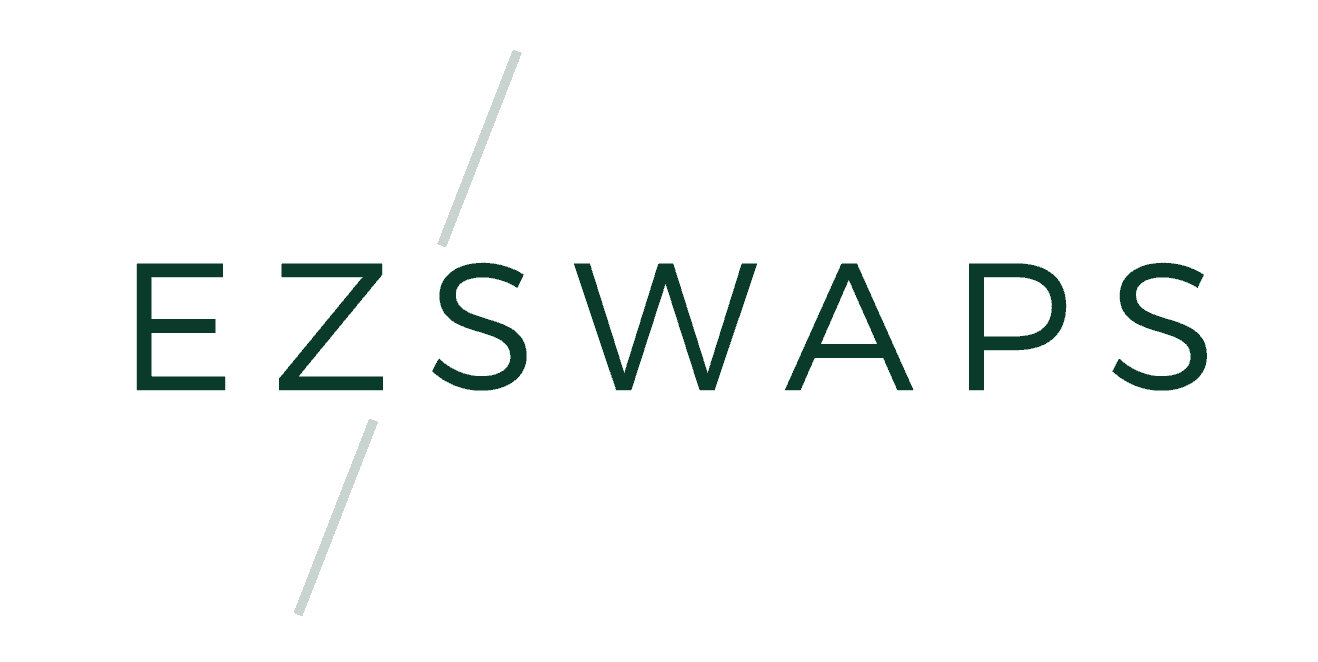Deprecated: mb_convert_encoding(): Handling HTML entities via mbstring is deprecated; use htmlspecialchars, htmlentities, or mb_encode_numericentity/mb_decode_numericentity instead in /home2/ezswapsco/public_html/wp-content/themes/pipdig-etoile/inc/functions/inc/functions/pinterest_hover.php on line 36
Reading Time: 10 minutes
If you want to live a more sustainable life, the bathroom is one of the easiest places to start making changes.
Plastic sponges and pouffes (or puffs) like the ones below are extremely common, but terrible for the environment.
In this blog post, we’ll take a look at five sustainable alternatives to the colourful plastic meshes and scrubs, giving you a truly clean start in your mission to live sustainably.
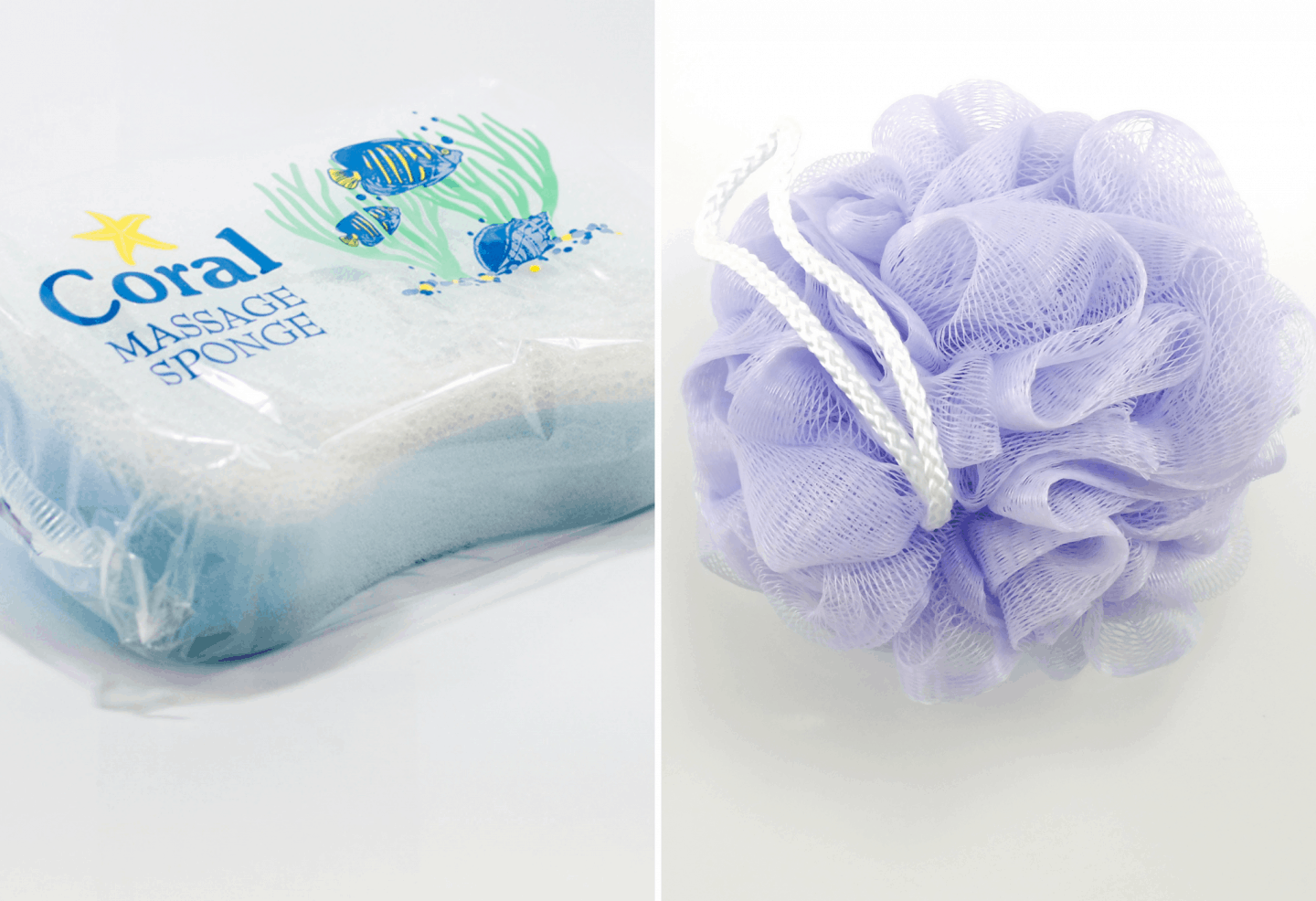
1. The loofah
A loofah, sometimes spelt luffa, is the fruit (even though it’s more commonly known as a vegetable) of a plant that hails from the same species as the cucumber.
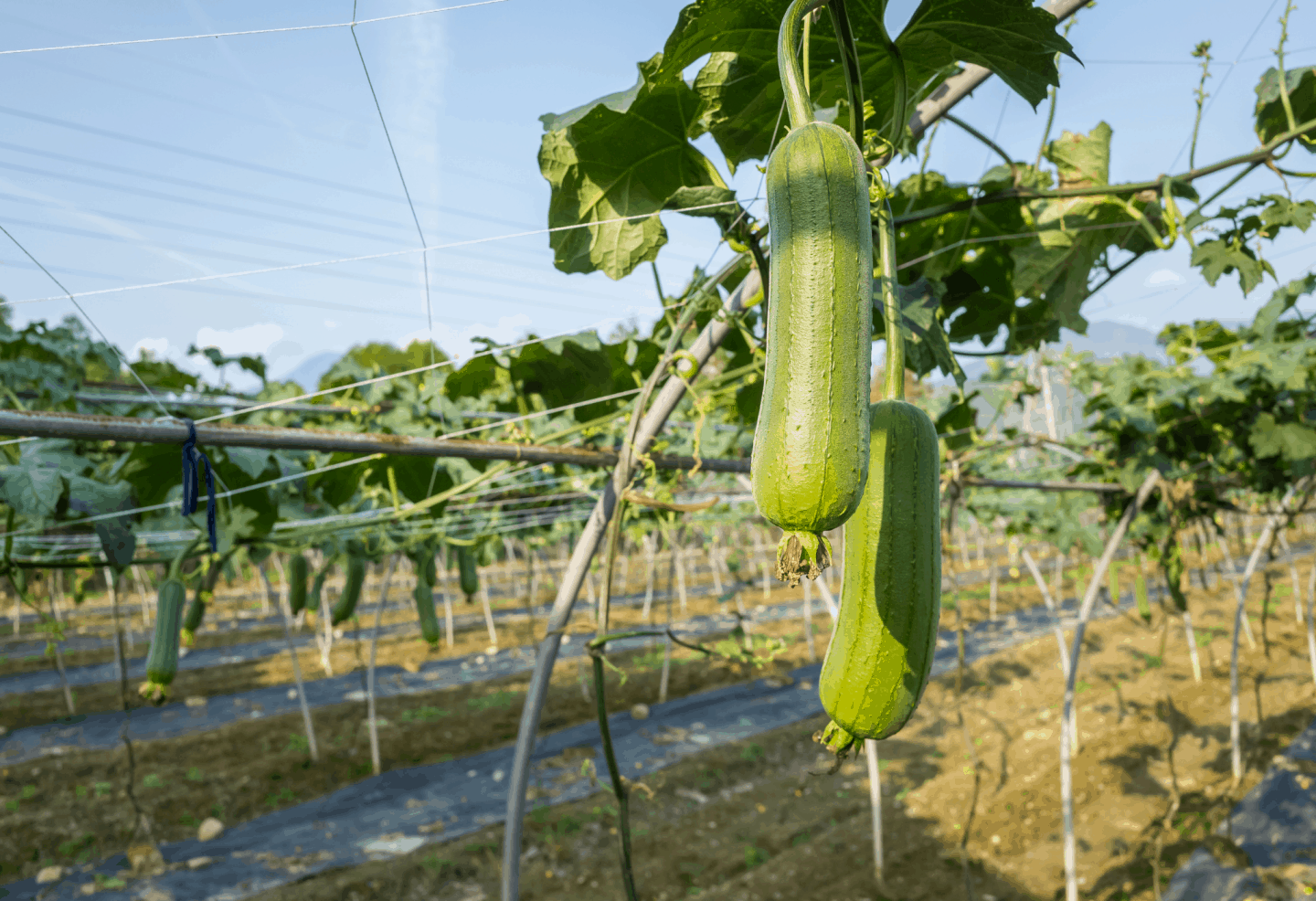
To be edible they must be harvested at a young stage of their development, but those that don’t end up on our plates can be turned into loofah sponges.
How is a loofah sponge made?
After the plant blooms, the flower develops into a long gourd similar to a cucumber or a courgette. When their green skin has turned dark yellow or brown and the fruit feels light they are mature and ready to pick.
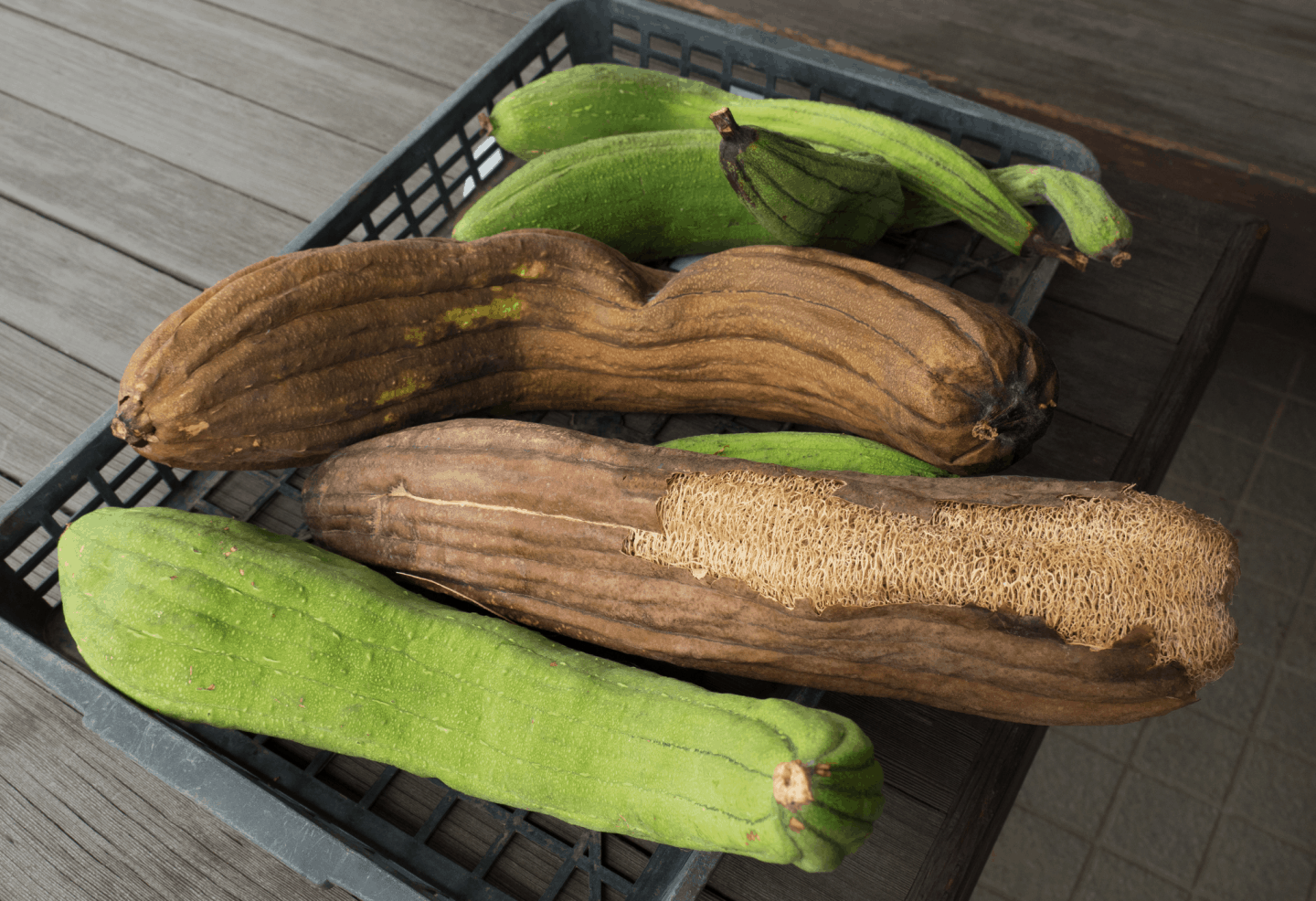
Dried loofahs are then peeled, and their seeds are removed. They are then sliced, cut, or shaped in a variety of ways before being sold as sponges.

Benefits of the loofah sponge
- Loofahs are great to use with soap and lather up very easily under the shower.
- Their surface is perfect for exfoliating the skin on your body.
- Rubbing the loofah against your skin during a shower or bath also boosts blood circulation.
How to clean a loofah sponge
After using a loofah, make sure to wash it with soap and allow it to air dry. The shower area should have enough airflow to completely dry out the loofah between uses. Leave your window open or consider keeping the wet loofah outside of the shower cubicle for more airflow.
Every so often you should also deep clean your loofah. Soak it in a solution made up of warm water and a few drops of pure essential oils or vinegar then rinse with water and let air dry.
If it changes colour or smells, it’s time to get a new one, and as it’s a plant, you can put it in your compost bin!
The loofah is a great sustainable alternative to the plastic puff and if you’ve never tried it I highly recommend it!
You can buy a natural loofah sponge here.
2. The sea sponge
As the name suggests, this is a naturally-occurring sponge from the ocean which is also hypoallergenic and perfect for people with sensitive skin.
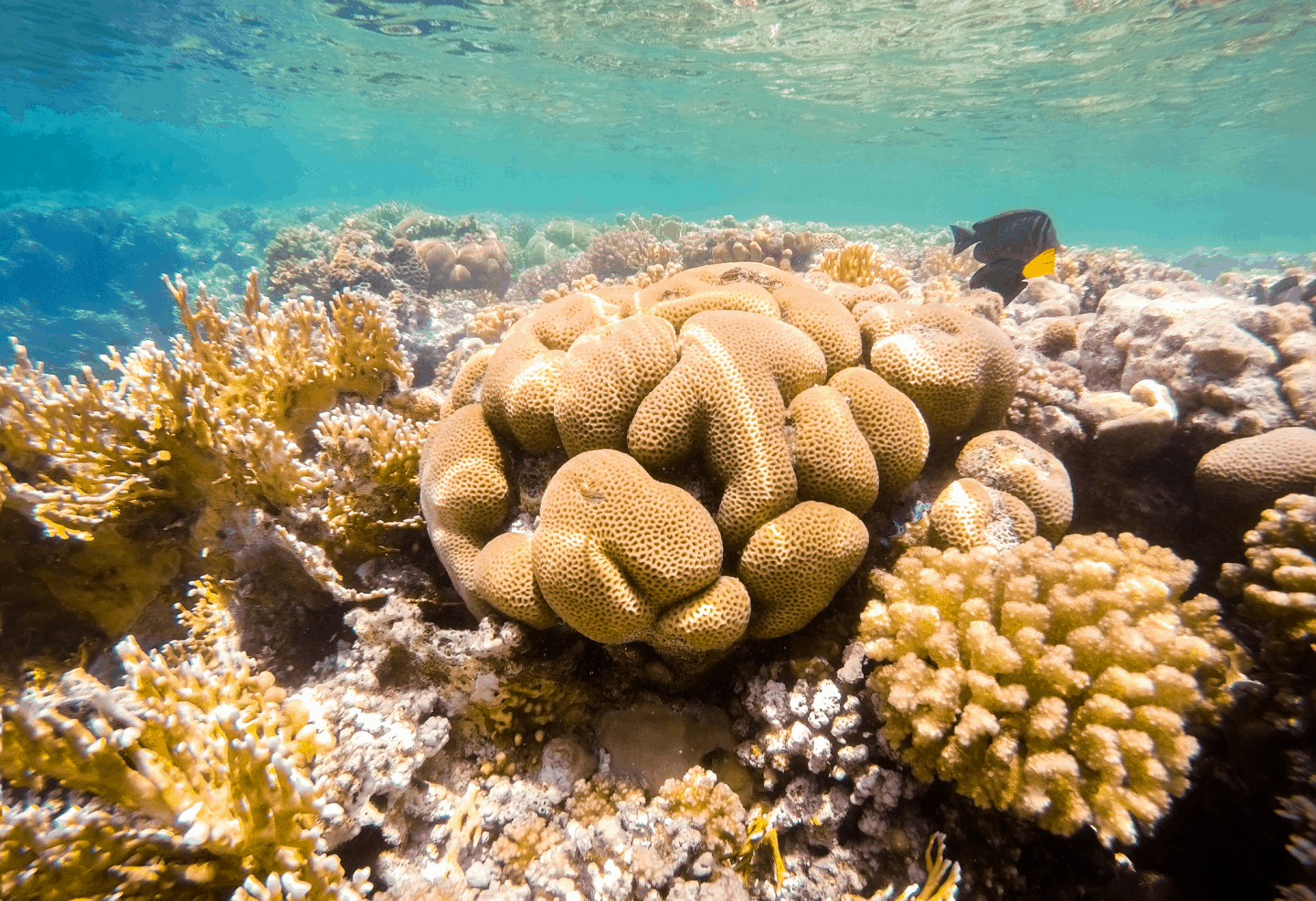
The sea sponge lives on the ocean floor and attaches itself to a fixed location, so it doesn’t move around. It’s not a coral, nor a plant. It is classified as an animal which has neither a brain nor a central nervous system. It feeds by filtering plankton and organic particles from the ocean currents.
Sponges have been growing in the seas for millions of years and have the amazing ability to constantly renew themselves.
How are sea sponges made?
There are between 5000 and 10000 different species of sponges identified by scientists worldwide, but only around seven species harvested worldwide are considered to be commercially viable.
Sponge divers are trained to cut the sponge free while leaving the base intact, as this allows it to regenerate over a period of between three and five years. Don’t worry, the sponge doesn’t feel any pain, it’s like cutting hair.
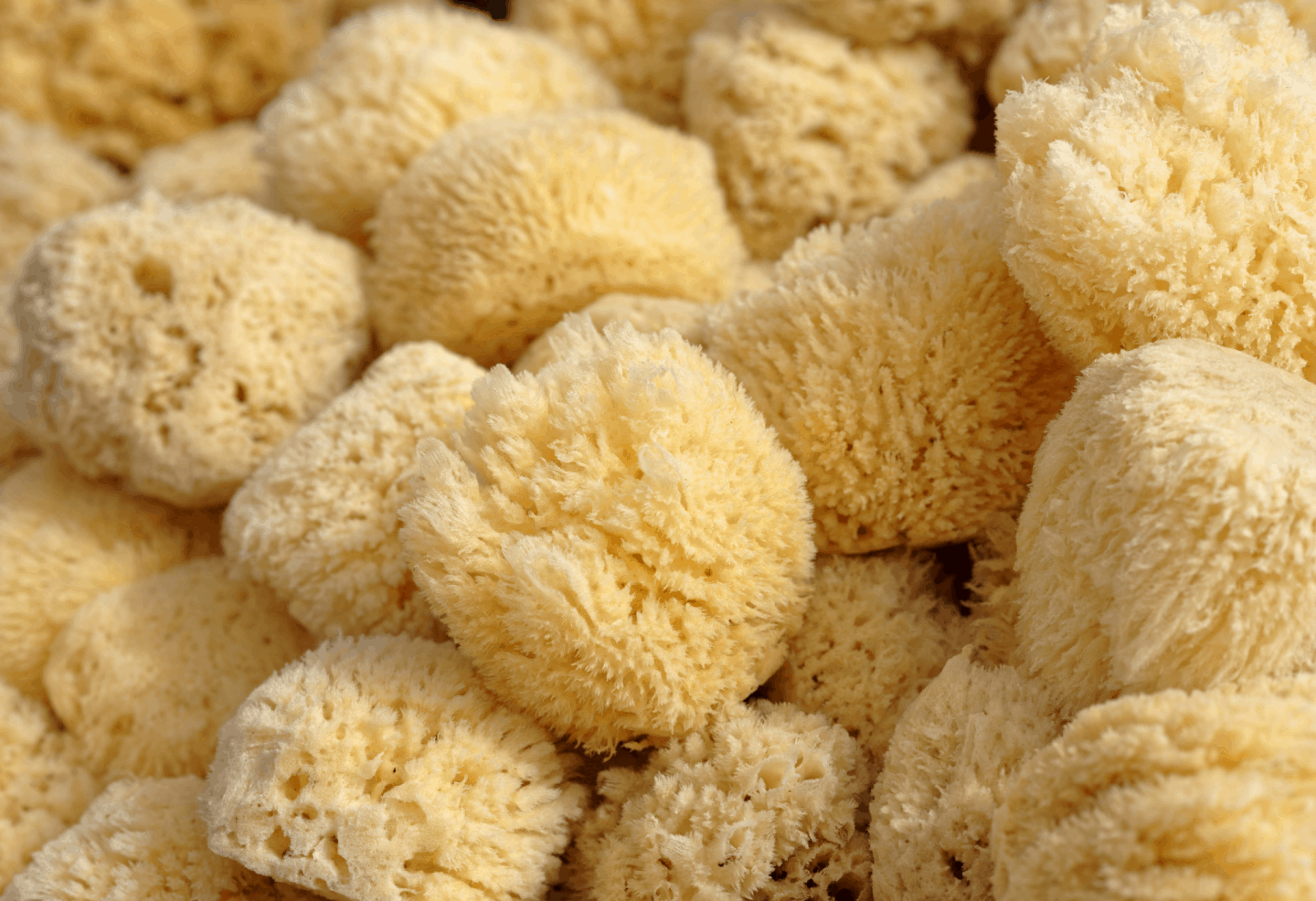
Benefits of using a sea sponge
Sea sponges are safe to use on sensitive skin as they contain no chemicals, dyes or artificial ingredients. They are also suitable for babies as they are so soft.
Unlike sponges made from plastic, sea sponges are 100% natural, eco-friendly and biodegradable.
How to take care of a sea sponge
Like loofahs, sea sponges, require a little bit of care to prevent unwanted bacteria.
After using the sponge on your body, wash it with soap and water before ringing out any excess moisture and letting it dry naturally.
To keep the sponge in great shape and have it last longer, try to deep clean it every few weeks to prevent bacteria from building up.
You can do this by letting it soak in a mixture of baking soda and warm water, or vinegar and warm water (one-part vinegar or baking soda and three-parts water) and letting it dry naturally in a well-ventilated area.
If you look after your sponge it can last for many years.
Sea sponges are affordable, sustainable and have a longer life than synthetic sponges. Making the switch will not only save the planet, but it will save you money in the long-run too!
When the sea sponge has reached its end of life you can throw it in the compost bin as it’s biodegradable.
Sea sponges are another great sustainable alternative to plastic sponges and I love how soft and squishy they are!
You can buy loofah sponges here.
3. The konjac sponge
The konjac sponge is a popular cleansing sponge mainly used on the face, due to its size, but it can be used on any area of the body. They were first created as a way for Japanese farmers to cleanse a baby’s skin.
They are relatively small in size, and even those made for the body never seem to be particularly big.
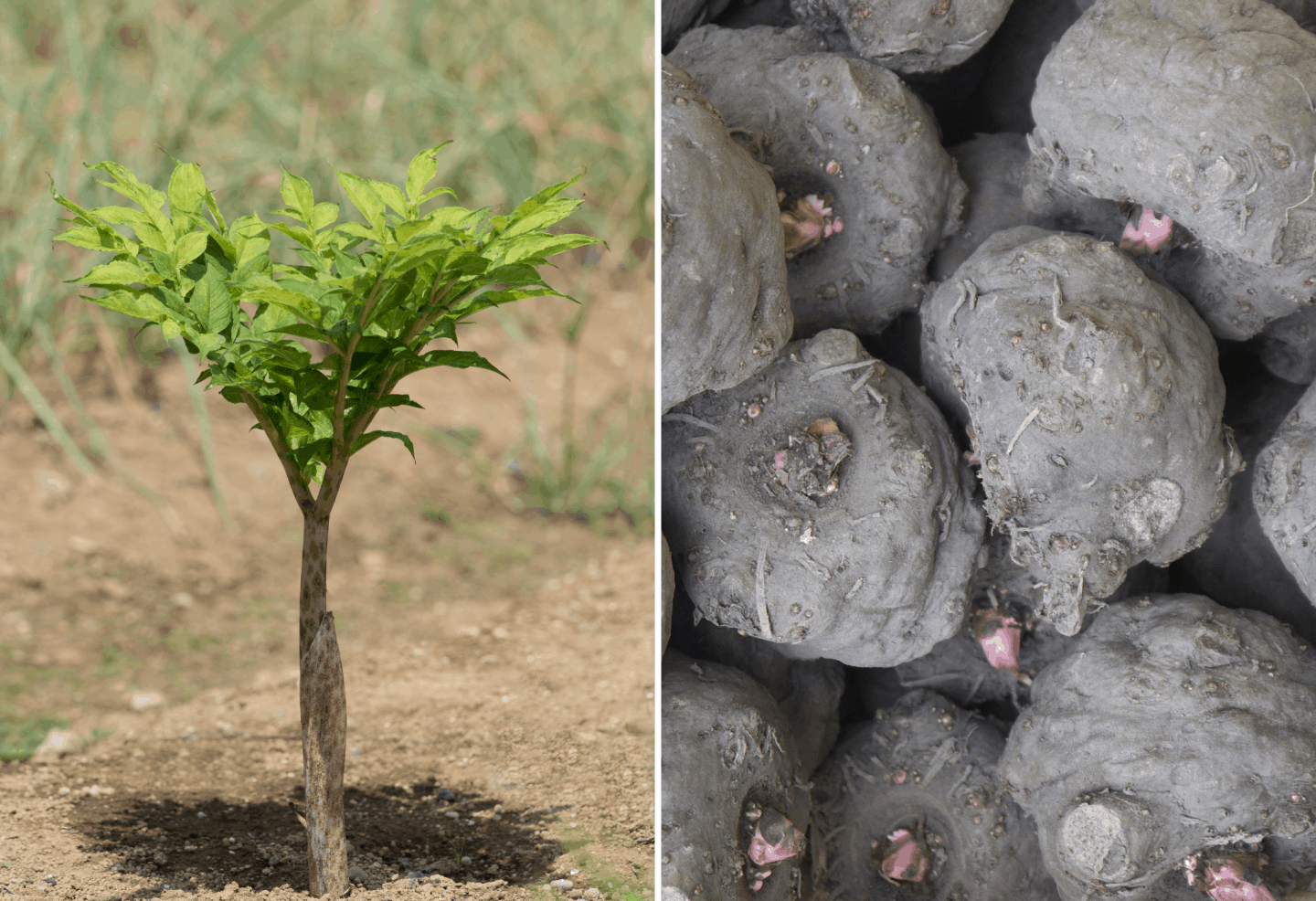
How are konjac sponges made?
The konjac is a porous root vegetable that’s native to Asia. The root of the plant is made into powder and mixed with cold water and calcium hydroxide. Then, the mixed ingredients are poured quickly into a mold and left to solidify. Once solid they are freeze-dried and then thawed in a drying room.
You can find out more details about the entire process here.

Benefits of using a konjac sponge
Besides being vegan, cruelty-free, eco-friendly, and biodegradable, the konjac sponge is very delicate and suitable for all skin types.
- It helps cleanse in a gentle way
- Great for makeup removal
- They are free from toxins, synthetic additives, artificial dyes (although always check the label), and pollutants.
Some konjac sponges are enriched with activated bamboo charcoal, green tea, turmeric, red clay, chamomile, etc. to help improve the skin texture and complexion. Honestly though, I can’t tell if there really is a difference (I suspect there isn’t!).
How to use and take care of a konjac sponge
Some konjac sponges come pre-moistened however some are in their dry and hard state when you open the packaging. If so, keep it soaked in warm water for 10-15 minutes until it doubles in size and becomes soft. If it’s not your first time using the sponge, just make sure to wet it properly under running warm water. Then proceed to use it as you would any other sponge.
When you’re finished with it, wash the sponge with soap, squeeze all the water out of it gently and let it air-dry (don’t twist it or squeeze too hard).
As with any sponge, keep it clean and dry to avoid bacteria buildup and prevent mould from forming. If you care for it properly, konjac sponges can last four to six weeks or longer.
When you think the konjac sponge has reached the end of its life, you can just pop them in your compost pile or in your council’s food/green waste collection (check with your council first).
This website has a great selection of konjac sponges.
4. The sisal/jute/hemp mitt
I’ve put sisal, jute and hemp in the same category as even though the material they are made of comes from different plants, the end product is pretty similar; a washing mitt.
What is sisal?
Sisal is a species of flowering plant native to southern Mexico but widely cultivated in many other countries.

It yields a strong fibre used to make rope and various other products. It is sometimes referred to as “sisal hemp” because for centuries hemp was a major source for fibre, and other fibre sources were named after it.
What is jute?
Jute is a long, soft, shiny fibre that can be spun into coarse, strong threads. It’s also used to make burlap, hessian or gunny cloth. The cultivation of jute requires a warm and humid climate, plenty of rainfall, and well-drained soils.
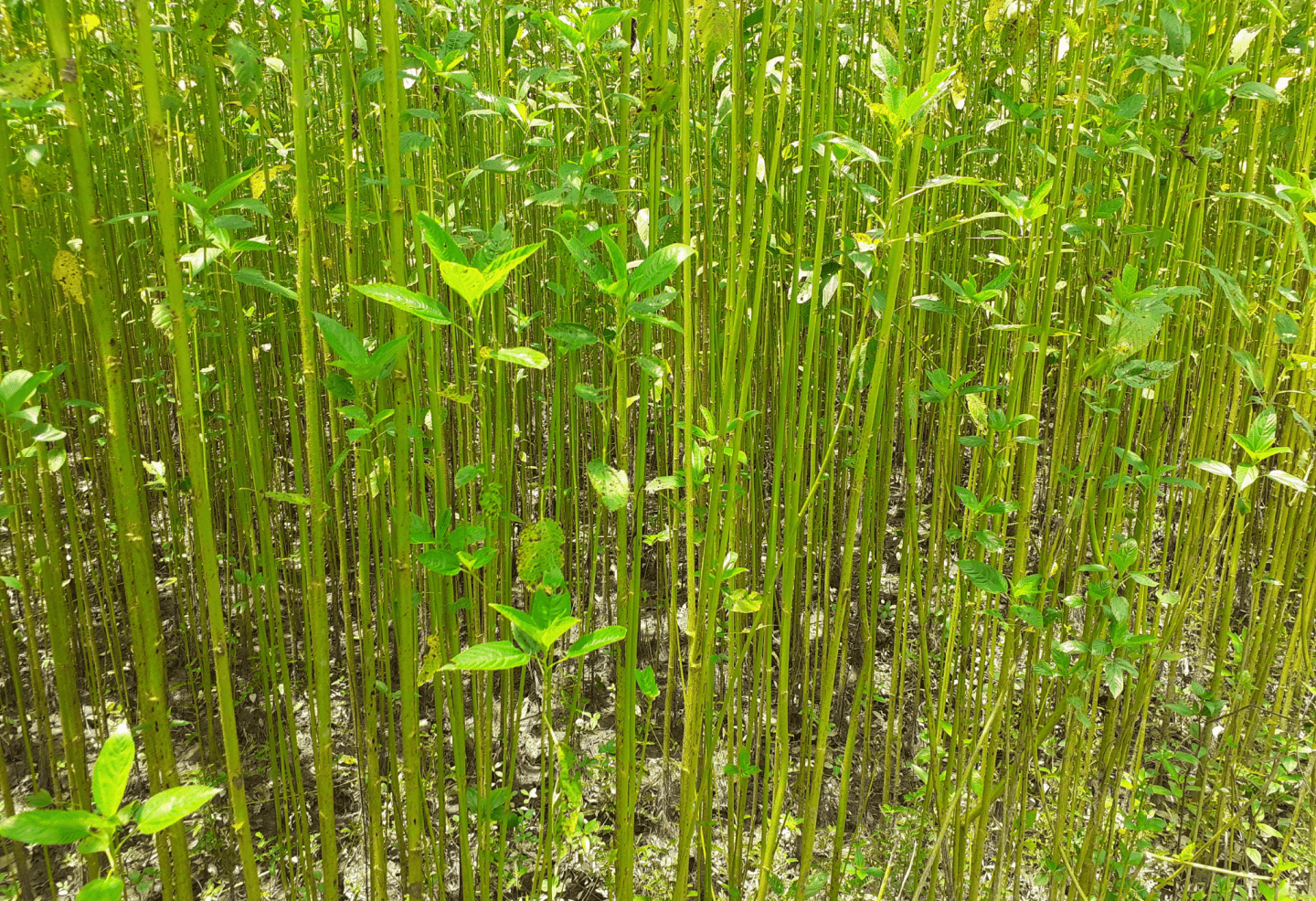
It barely needs fertilisers and pesticides and is one of the most affordable natural fibres around, second only to cotton in the amount produced and variety of uses.
What is hemp?
Hemp, or industrial hemp, is a variety of the Cannabis plant species that is grown specifically for industrial use.
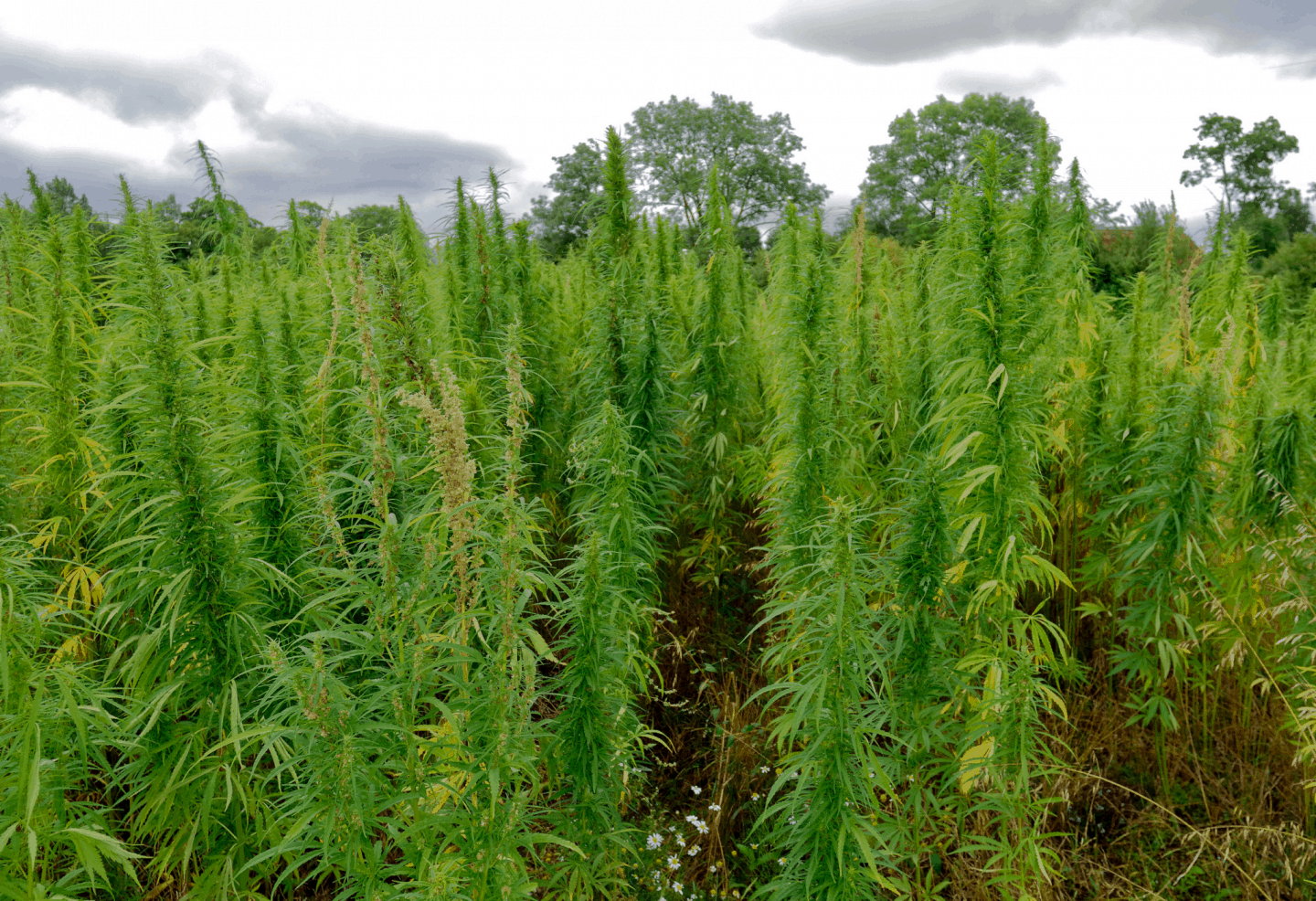
Like sisal and jute, it can be used to make a wide range of products including paper, rope, textiles, clothing, biodegradable plastics, paint, insulation, biofuel, food, and animal feed.
How is sisal made?
Sisal fibre is made from the leaves of the plant which are crushed between rollers. The resulting pulp is scraped from the fibre, which is then washed and dried by mechanical or natural means.
How is jute made?
Jute fibre comes from the stem and ribbon (outer skin) of the jute plant. The fibres are extracted by a process called retting, which consists of bundling stems together and immersing them in slow running water. After retting, the non-fibrous material is scraped off and the crucial fibres are pulled from the jute stem. This laborious job is known as stripping and has to be done by hand.
How is hemp made?
The stalks of the hemp plant consist of two layers: an outer layer formed from rope-like bast fibres, and an inner layer consisting of a woody pith. The fibres are separated from the bark again via retting. The resulting fibres are then spun together to produce a continuous thread that can be woven into a fabric.
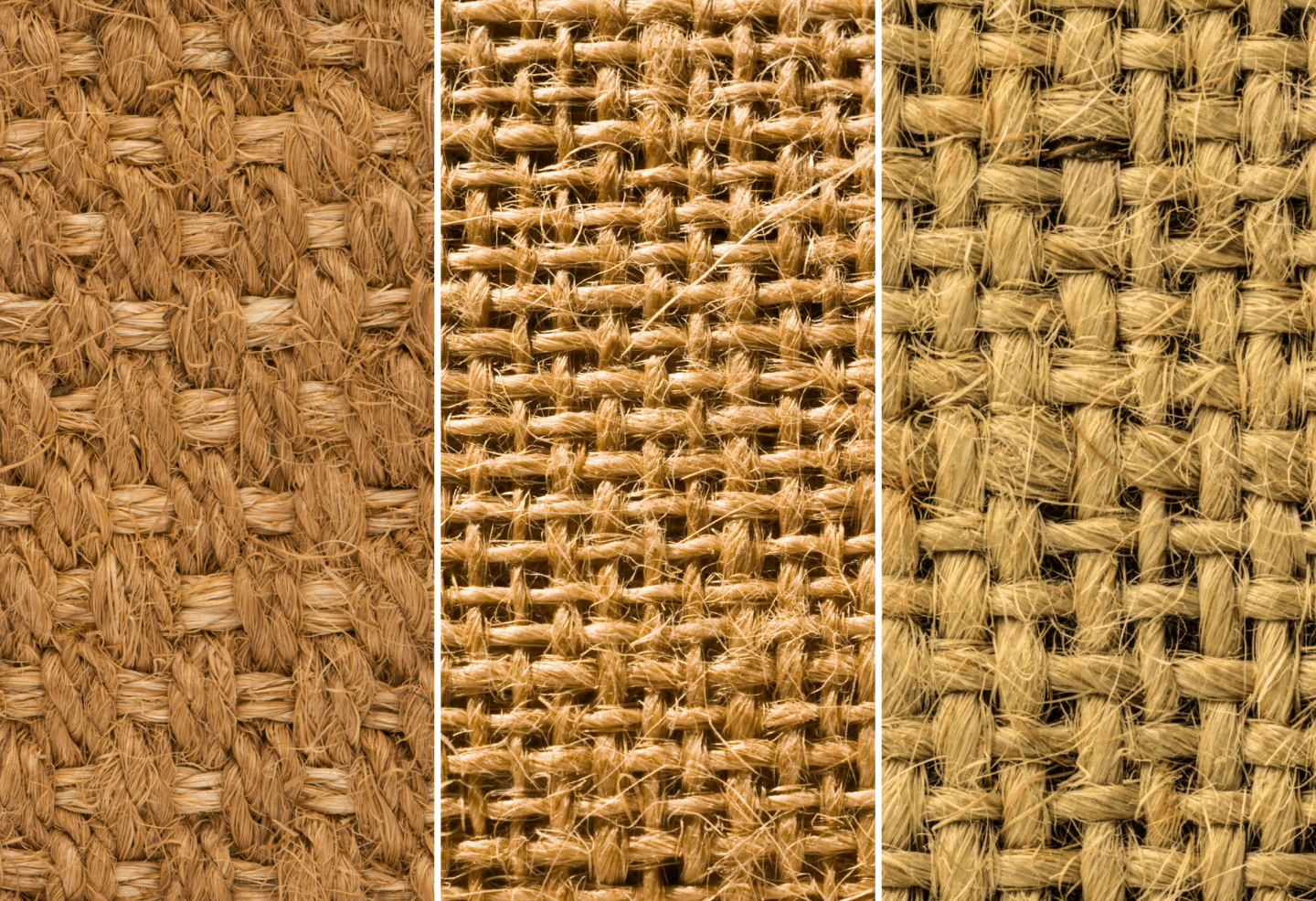
Benefits of sisal, jute and hemp
Although they come from different plants, all three are durable, natural fibers and also very easily cultivated.
No pesticides or chemical fertilizers are required to grow any of the three, and of course, they are 100% biodegradable, so when they look worse for wear you can just throw them in your compost heap or with the garden/food waste collected by the council.
Out of all the other options on this post, these are the best for exfoliating, but I wouldn’t recommend them for overly-sensitive skin as they can be slightly abrasive.
To use, place your hand or soap into the mitt, lather product and rub over the body in a circular motion.
How to take care of your shower mitt
Wash soap from the mitt and leave in a well-ventilated area or out in the sun to dry.
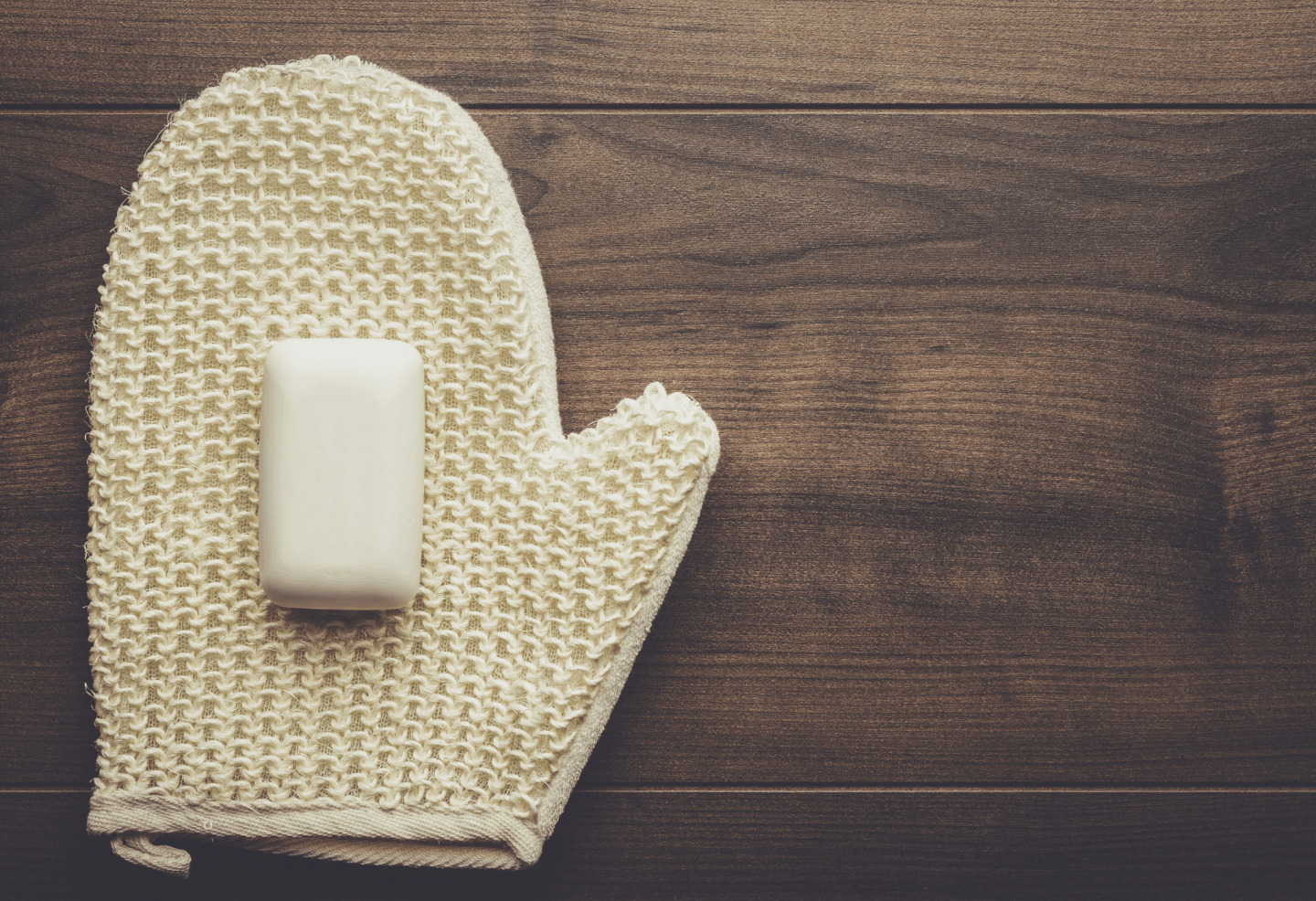
You can also wash them in the washing machine at warm temperatures.
Depending on the material and fabric, you might want to use these only once or twice a week as it could be a little abrasive on your skin if you used it every day.
Click on these links to buy a sisal mitt, a jute mitt or a hemp mitt.
5. The washcloth or flannel
Last but not least is the washcloth. These are more commonly used in the US than in Europe.
A washcloth or flannel is a small piece of cloth, designed for cleaning. Unlike a regular towel that is used to dry, the purpose of the washcloth is to make it wet and soapy for use in the bath or under the shower.
You could even get ones where you can put your hand or soap inside like the picture below.

How is a washcloth made?
There are all sorts of washcloths out there, but I would recommend those made from organic cotton, muslin (which is loose, plain weave cotton) or linen. If you pick one made from 100% biodegradable materials then you can cut it up and compost it when it no longer serves its purpose.
[Whilst cotton is an organic material, farming cotton uses high levels of pesticides and toxic chemicals that seep into the earth and water supplies, so I would recommend buying one made from organic cotton. Depending on where it’s grown, some organic cotton farms are still allowed to use pesticides, but fewer of them compared to regular cotton farms.]
Avoid microfiber washcloths as these are synthetic, not eco-friendly and release microplastics. Always check the label before you buy.
I would also avoid bamboo washcloths, as the process used to make fabric from bamboo uses lots of chemicals that are bad for the environment.
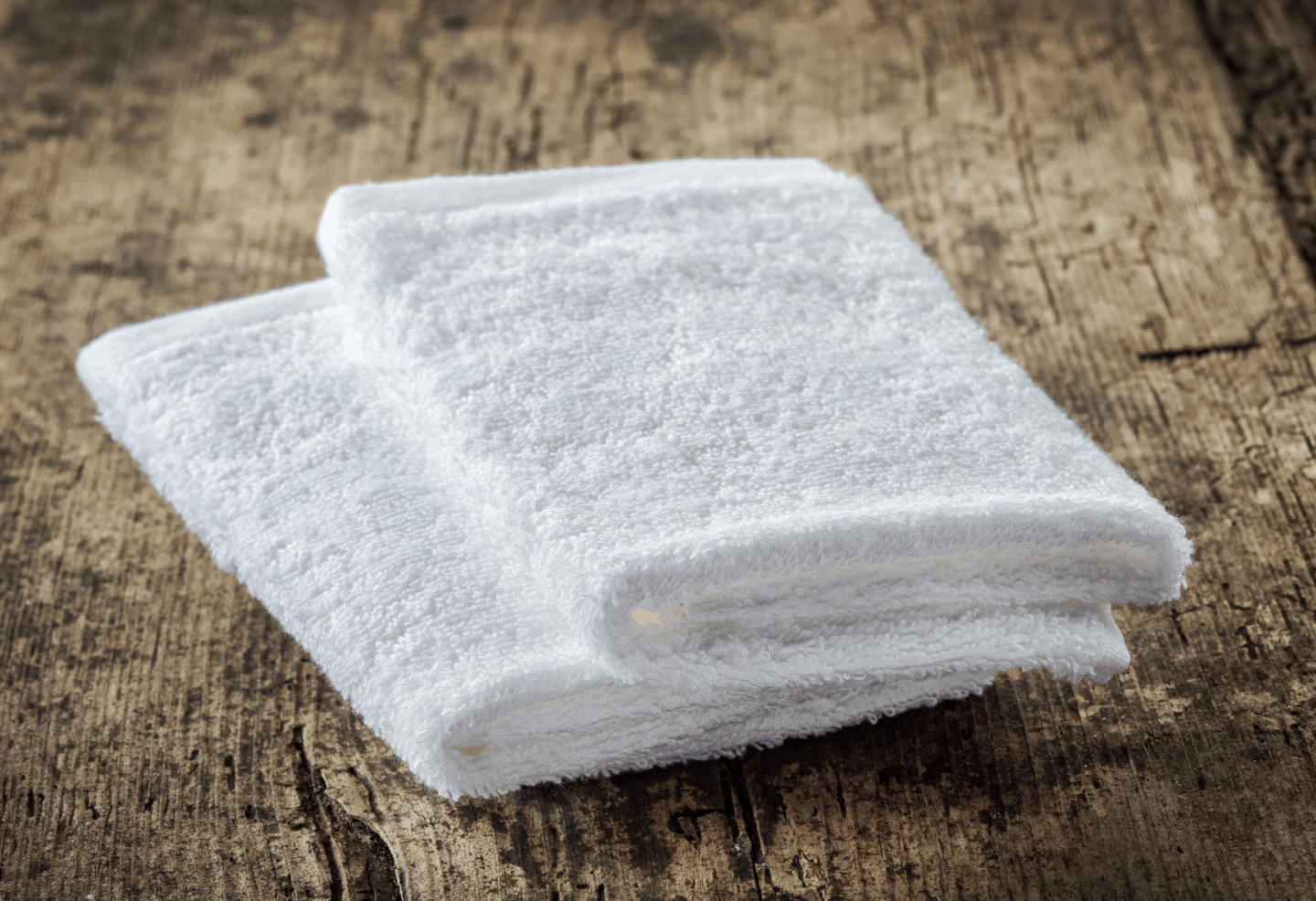
Benefits of using a washcloth
Like natural sponges and konjac sponges mentioned further up in this post, washcloths are generally a good option for the face. They can help remove makeup that the act of cleansing and rinsing alone won’t achieve. Also, the washcloth provides a bit of exfoliation, which can help give the skin a clear and radiant glow.
How to take care of a washcloth
When you are done using the washcloth, pop it in the washing machine with the rest of your laundry.
Always use a fresh washcloth every time you shower/bathe. Washcloths can last for many years if you look after them properly.
You can buy a pack of three washcloths here.
Which swap will you make?
I hope this post has provided you with lots of suitable alternatives to the plastic sponge or puff. It’s a small change that can make a huge difference, considering how popular the mass-produced plastic versions are.
Which one is your favourite? Let me know in the comments below!
